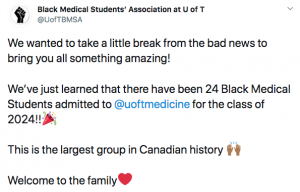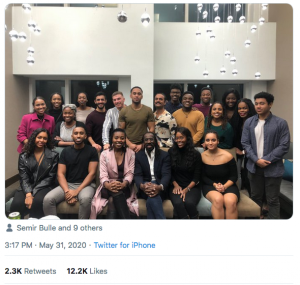At the risk of appearing to be jumping on the bandwagon, it feels tone deaf right now to blog about something unrelated to racism in North America given how this important issue is currently dominating media coverage, our conversations and our thoughts.
CCRM has written many times about the shortage of talent and leadership in the regenerative medicine and cell and gene therapy field. This issue certainly hasn’t gone away and we know it is on the minds of other leaders in this space. I don’t think anyone will be surprised to read that African Americans and African Canadians are under-represented in our industry.
The coronavirus pandemic has demonstrated that remote working is a viable option for workplaces, which opens up the opportunity for our workforces to be based anywhere in the world (obviously I’m referring to those who don’t work in labs or biomanufacturing facilities). This could help to address the talent issue once these highly qualified personnel have been trained and gained crucial industry and management experience.
The success of remote work, as we’ve been experiencing it on a global scale, opens up hiring possibilities. However, it behooves employers to ensure their hires reflect the diversity we see in society. And equally, if not more essential, their leadership should also reflect that diversity.
African American and African Canadian students won’t become tomorrow’s employees and future leaders if they aren’t supported when they enter science, technology, engineering and math (STEM) programs. A study published in the journal Educational Researcher in 2019 looked at the high dropout rate of Latino and Black students in STEM programs, compared to White students. (For the purposes of this blog, I am focusing on the findings of the Black students only, but the numbers are similar for the Latino students.)
Inside Higher Ed summarized the study findings as follows: 40 per cent of the Black students switched majors versus 29 percent of the White students. As well, 26 per cent of Black STEM majors left their institutions without earning a degree compared to 13 per cent of White STEM majors.
This is despite the fact, according to the study authors, “a number of recent national studies [have shown] that Black and Latina/o youth are as likely to enter STEM majors as their White peers.” The researchers based their findings on federal data from the National Center for Education Statistics for 5,600 black, Latino and White students.
Jeremy Bauer-Wolf’s article states that the study authors were not able to identify why this trend occurs, but some theories were offered. One of the quoted experts makes the point that “black and Latino students are choosing to leave for occupations that make less money and have less status.”
This is the focus of an article called “STEM and Blacks” in the publication Diverse Education. It explains that although the number of Black students attending colleges and universities keeps increasing, “Blacks still gravitate toward the same types of professions.” And these are not STEM jobs. The result is career choices with lower salaries and this perpetuates the disparity in earning potential between African Americans/African Canadians and Caucasians.
Interestingly, “Eight-in-ten Americans say it is at least somewhat important to have racial and ethnic diversity in today’s workplaces, including around half who categorize this as “extremely” (26%) or “very” important (27%). (Source: Pew Research Center.)” I’ve already written about equity, diversity and inclusion (EDI) and why an ethnically diverse workforce is so essential.
Is the situation any different in Canada? A 2017 Maclean’s article speaks of the “soft bigotry of low expectations” in our schools and society that discourage Black students from pursuing STEM educations at the post-secondary level. This is a widespread and significant issue. It’s why role models are so important and effective, and why “Be What You See” campaigns, like this one by GE Healthcare, and featuring CCRM’s Dr. Lise Munsie, are so crucial. This campaign is intended to encourage girls and young women, of all races, to pursue STEM careers, but follow @BlackAFinSTEM for “black STEM unity” and check out the people featured in this article.
That same Maclean’s article also says that encouraging diversity in STEM is happening at some universities. Writer Andray Domise points to the University of Toronto (U of T) where “only one Black student exists among the current first year medical cohort” but goes on to say that the university subsequently launched the Black Student Application program to promote medicine as a viable career and increase applications.
Fast forward three years and U of T can now boast this:
On Monday (June 1) this was in my Twitter feed. The next morning I heard an interview on CBC’s Metro Morning with the mother of Chika Oriuwa, a Black woman and the only Black person in her class of 259 students when she joined four years ago, who was named valedictorian of this year’s class of medical graduates at U of T. Read about her here.
Best wishes to the Class of 2024 and to Chika Oriuwa. I will let her have the final word.
Stacey Johnson
Latest posts by Stacey Johnson (see all)
- Right Turn: Beyond the ’stache: The science, the progress, the promise - November 26, 2025
- Right Turn: Can Bryan Johnson live forever? Will regenerative medicine help him do so? - October 10, 2025
- Right Turn: #pinksocks, diabetes news and other ramblings - June 24, 2025








Comments